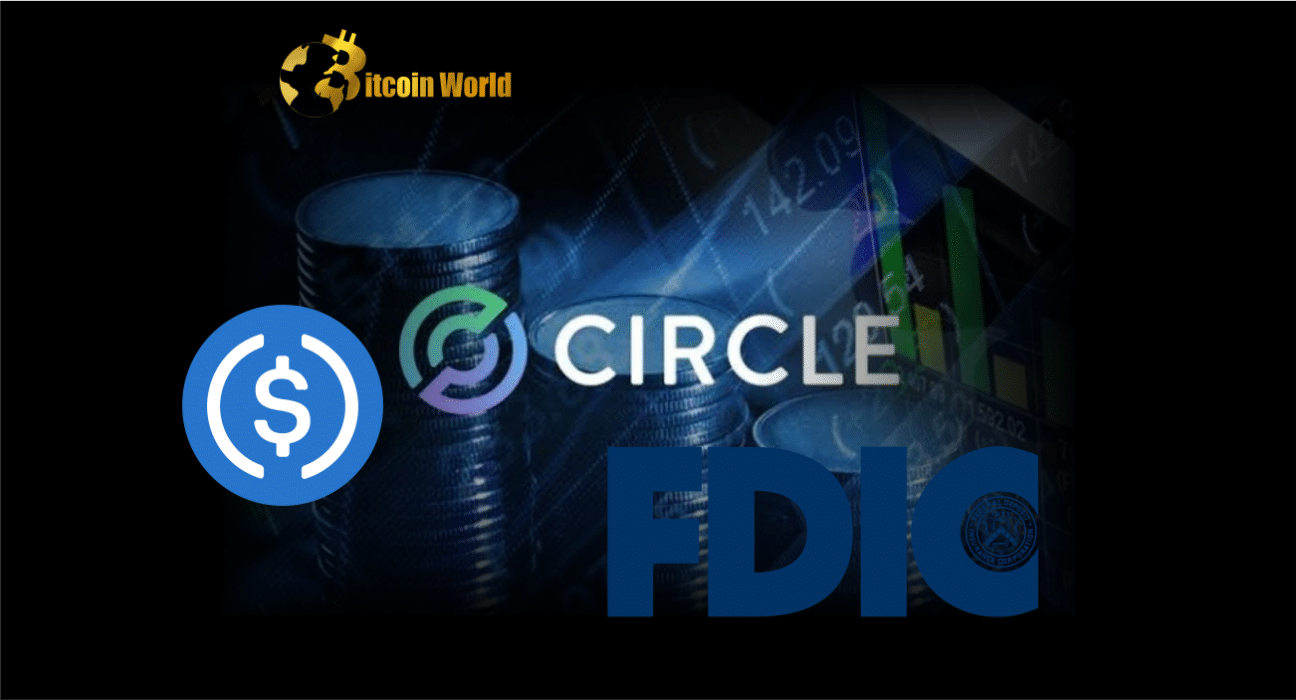The cryptocurrency world rarely experiences a dull moment, but recent events have sent ripples of concern throughout the market. The spotlight is now firmly on Circle, a prominent player in blockchain payment technology and the issuer of USD Coin (USDC), a leading stablecoin. Why? Because the unexpected closure of Silicon Valley Bank (SVB) has revealed a significant exposure, raising questions about stablecoin stability and the broader health of the crypto ecosystem. Let’s dive into what happened and what it means for you.
What Exactly Happened with Circle and Silicon Valley Bank?
On March 10th, Circle made a startling announcement: wire transfers initiated to withdraw funds from Silicon Valley Bank (SVB) hadn’t been processed. This left a substantial $3.3 billion of USDC reserves – nearly 8.25% of their total $40 billion reserves – stuck at SVB. This revelation sent shockwaves because USDC is designed to be pegged 1:1 to the US dollar, meaning each USDC should ideally be redeemable for one US dollar. The issue with SVB jeopardized this peg, at least temporarily.
Adding to the anxiety, Circle’s latest audit already indicated that a considerable portion of their reserves, around 20% or $8.6 billion, were held across various financial institutions, including Silvergate (which had already declared bankruptcy) and SVB. This concentration of reserves in institutions facing financial difficulties raised eyebrows and fueled market uncertainty.
To their credit, Circle opted for transparency, taking to Twitter to keep the community informed. They confirmed the $3.3 billion exposure at SVB and stated they were working with other depositors to urge SVB to remain operational, emphasizing its importance to the US economy. Circle committed to following the directives of regulatory bodies at all levels.
Why is Silicon Valley Bank’s Failure a Big Deal?
Silicon Valley Bank wasn’t just any bank. It was a major financial artery for venture-backed enterprises, including many in the cryptocurrency space. Its sudden closure by California regulators, becoming the first FDIC-insured bank to fail in 2023, was a black swan event – an unforeseen event with severe consequences. The FDIC was appointed as receiver to protect insured deposits, but the underlying reasons for the bank’s swift downfall are still being investigated.
SVB was a go-to bank for prominent venture capital firms heavily invested in crypto, such as Andreessen Horowitz (a16z) and Sequoia Capital. Being among the top 20 largest US banks by total assets, SVB’s collapse sent tremors far beyond Silicon Valley, impacting the wider financial landscape.
The Immediate Impact: USDC De-pegs
Before Circle’s announcement, CoinGecko data showed USDC trading slightly below its $1 peg, at $0.98. However, the news of the SVB exposure triggered a sharp sell-off. USDC’s price plummeted to as low as $0.93, signifying a significant de-pegging event. This price fluctuation demonstrated a loss of confidence in USDC’s 1:1 dollar backing, even though Circle maintained that the vast majority of its reserves were secure and diversified.
Circle’s Response: Protecting USDC from a ‘Black Swan’
In the midst of the crisis, Circle’s Chief Strategy Officer and Head of Global Policy stepped forward to reinforce their commitment to protecting USDC. They described the SVB situation as a “black swan failure” in the US banking system. This highlighted the unexpected and systemic nature of the risk that had materialized.
Furthermore, Circle actively called for a federal rescue plan for SVB. They argued that without intervention, businesses, banks, and entrepreneurs would face even more severe repercussions. This plea underscores the interconnectedness of the traditional financial system and the burgeoning crypto industry, and how failures in one sector can rapidly impact the other.
Key Takeaways and What This Means for Crypto
The SVB-USDC situation offers several crucial insights for anyone involved in or observing the cryptocurrency space:
- Transparency is Paramount: Circle’s proactive communication, particularly on Twitter, was commendable. In times of crisis, transparency builds trust and allows the market to react based on information, not just fear and speculation.
- Stablecoin Risks are Real: Despite being designed for stability, stablecoins are not risk-free. The USDC de-pegging serves as a stark reminder that even asset-backed stablecoins are vulnerable to the financial health of their custodians and the broader economic environment.
- Banking Infrastructure Matters: The reliance of crypto companies on traditional banking institutions creates a critical link and potential point of failure. The SVB collapse highlights the need for robust and diversified banking solutions for the crypto industry.
- Regulatory Scrutiny Will Increase: Events like this will undoubtedly intensify regulatory scrutiny on stablecoins and the crypto industry as a whole. Expect more discussions and potentially stricter regulations aimed at ensuring consumer protection and financial stability.
- Decentralization as a Potential Solution?: While USDC is centralized, this event might fuel further interest in decentralized stablecoins or more transparent and auditable reserve mechanisms for centralized stablecoins.
Looking Ahead
The dust is still settling from the SVB collapse, and the full ramifications are yet to unfold. However, this episode has served as a critical stress test for the stablecoin market and the broader crypto ecosystem. While USDC’s peg faced significant pressure, the situation also demonstrated the resilience and adaptability of the crypto community. Moving forward, expect heightened discussions around stablecoin regulation, reserve transparency, and the importance of robust financial infrastructure for the digital asset space.
This event is a powerful reminder that even in the innovative world of cryptocurrencies, traditional financial risks and systemic vulnerabilities can have a significant impact. Staying informed, understanding the risks, and advocating for responsible regulation are crucial for the continued growth and stability of the crypto market.
Disclaimer: The information provided is not trading advice, Bitcoinworld.co.in holds no liability for any investments made based on the information provided on this page. We strongly recommend independent research and/or consultation with a qualified professional before making any investment decisions.


